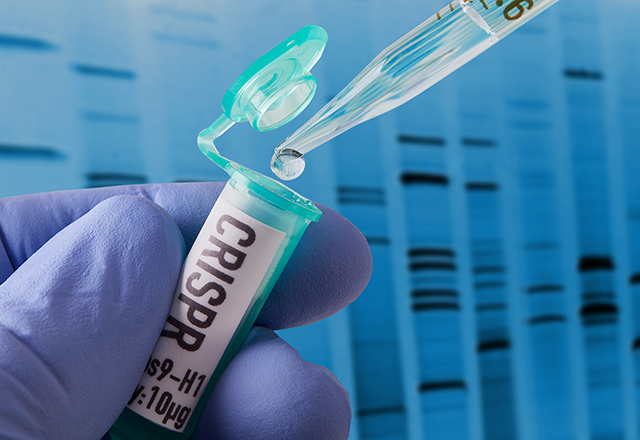Think back to when you were a kindergarten-age kid. Your teachers seemed like giants, and you likely had limitless energy to run around, jump, and play tag with your classmates. Now, imagine that every time you tried to run after your friends at the playground, you waddled everywhere and fell frequently. Imagine that whenever you tried to play tag, jump, or dance to “Head, Shoulders, Knees and Toes,” you had trouble coming up from the floor and found it difficult to run or crawl.
These are some of the typical symptoms that children suffering from Duchenne muscular dystrophy (DMD) experience. This condition is the most common form of muscular dystrophy, with an estimated prevalence of one in every 7,250 males age 5–24. What is Duchenne muscular dystrophy and why does it happen?
DMD is a genetic disorder caused by the absence of a gene called dystrophin, which encodes for a crucial protein primarily found in muscles used for movement (skeletal muscles) and in heart (cardiac) muscles. Dystrophin works alongside other proteins in skeletal and cardiac muscles to make them strong and to protect their integrity and function. DMD is a maternally inherited disorder that primarily affects boys (it can begin as early as age 3) and is characterized by progressive and lifelong muscle waste and deterioration. Indeed, many affected children begin using a wheelchair between ages 7 and 12, and decease prematurely from heart muscle damage (cardiomyopathy) and respiratory failure. There is currently no cure for DMD, but physical therapy and medications, such as steroid hormones, can help control symptoms and improve quality of life.
Researchers are actively pursuing several exciting strategies to target the many DMD mutations identified in the dystrophin gene. These approaches include gene therapy, exon skipping, stop codon readthrough and gene repair (summarized in the following table).
| Strategy | Description |
| Gene therapy | Genes (or other genetic material) are used to treat or prevent disease. For instance, introducing genetic materials into cells to compensate for abnormal genes or to make a beneficial protein. |
| Exon skipping | This method encourages cells to “skip” over faulty sections of DNA, leading to a shortened but still functional protein despite the genetic mutation. The FDA-approved drug Exondys 51 is a good example of an exon skipping treatment for some forms of DMD. |
| Stop codon readthrough | In this approach, cells are forced to ignore a “stop signal” mutation so that a complete protein can be produced. |
| Gene repair | This technique is used to correct a particular mutation at a specific site in a chromosome. |
One popular and straightforward way to edit faulty dystrophin genes is by using the genome editing tool CRISPR-Cas9 (clustered regularly interspaced short palindromic repeats associated protein 9). Put simply, using CRISPR-Cas9 is a way to cut and tweak DNA with high accuracy. This technology uses an enzyme (Cas9) to cut a cell’s DNA in a specific location, and then relies on the cell’s ability to stick the DNA back together again. This kind of fine control over the genome could be used in medicine to treat genetic diseases. However, for the CRISPR-Cas9 process to work at the DNA level in live cells of patients, it needs to be efficiently delivered — somewhat like how your physical address directs the mail carrier to your residence instead of your neighbor’s home. One such efficient gene delivery “service” is the adeno-associated virus (AAV). The AAV-CRISPR-Cas9 system is particularly useful for editing disease-associated genes because it can help make sure the CRISPR-Cas9 system is delivered to targeted tissues. That way, neighbor cells that don’t need to be edited don’t receive too much unwanted "mail,” especially ones that can tweak their DNA.
In a small, short-term study published Aug. 30 in Science, Leonela Amoasii and colleagues used the CRISPR-Cas9 tool in a dog model of DMD. These dystrophin-deficient dogs, called delta E50-MD, present a disease severity and progression that closely matches that found in human DMD patients. In this study, the researchers injected the AAV-CRISPR-Cas9 system into the muscles of two male dogs (less than 2 months old) and examined dystrophin protein expression six weeks later. They found that the injected muscles were making dystrophin again at about 60 percent of normal levels. Microscopic slide examination of tissue from treated dogs also showed that muscle integrity had improved, meaning there was less cell death, scarring and inflammation compared to untreated controls.
Next, the researchers injected the AAV-CRISPR-Cas9 system into the bloodstream of two other male dogs (also less than 2 months old) and tested for the rescue of dystrophin expression eight weeks later. Delivering the gene editing components though the bloodstream resulted in restoration of dystrophin protein expression in a broad range of muscles throughout the dog’s body, including the heart. Furthermore, dystrophin levels reached 58 percent of normal levels in the diaphragm and 92 percent in the heart. They created a model in which two very important muscles for alleviating DMD symptoms were now producing the critical dystrophin protein.
Longer studies will be needed to test for the safety and longevity of the AAV-CRISPR-Cas9 system in skeletal muscle stem cells. Otherwise, repeated injections will be necessary, because mature skeletal muscle cells are constantly being replaced, and these new muscle cells do not inherit the DMD treatment. Despite these areas for future research, when dealing with a disease that does not have a cure, any new advance is a welcomed sight.
To help the highest number of patients suffering from DMD, this therapy would also have to target other DMD-causing mutations. However, current gene therapy studies and the treated dogs support gene-editing approaches as clinically relevant treatment for DMD. With further research and development, this approach might prevent irreversible muscle damage, representing a possibility for boys who deserve to run, jump and breathe normally.
